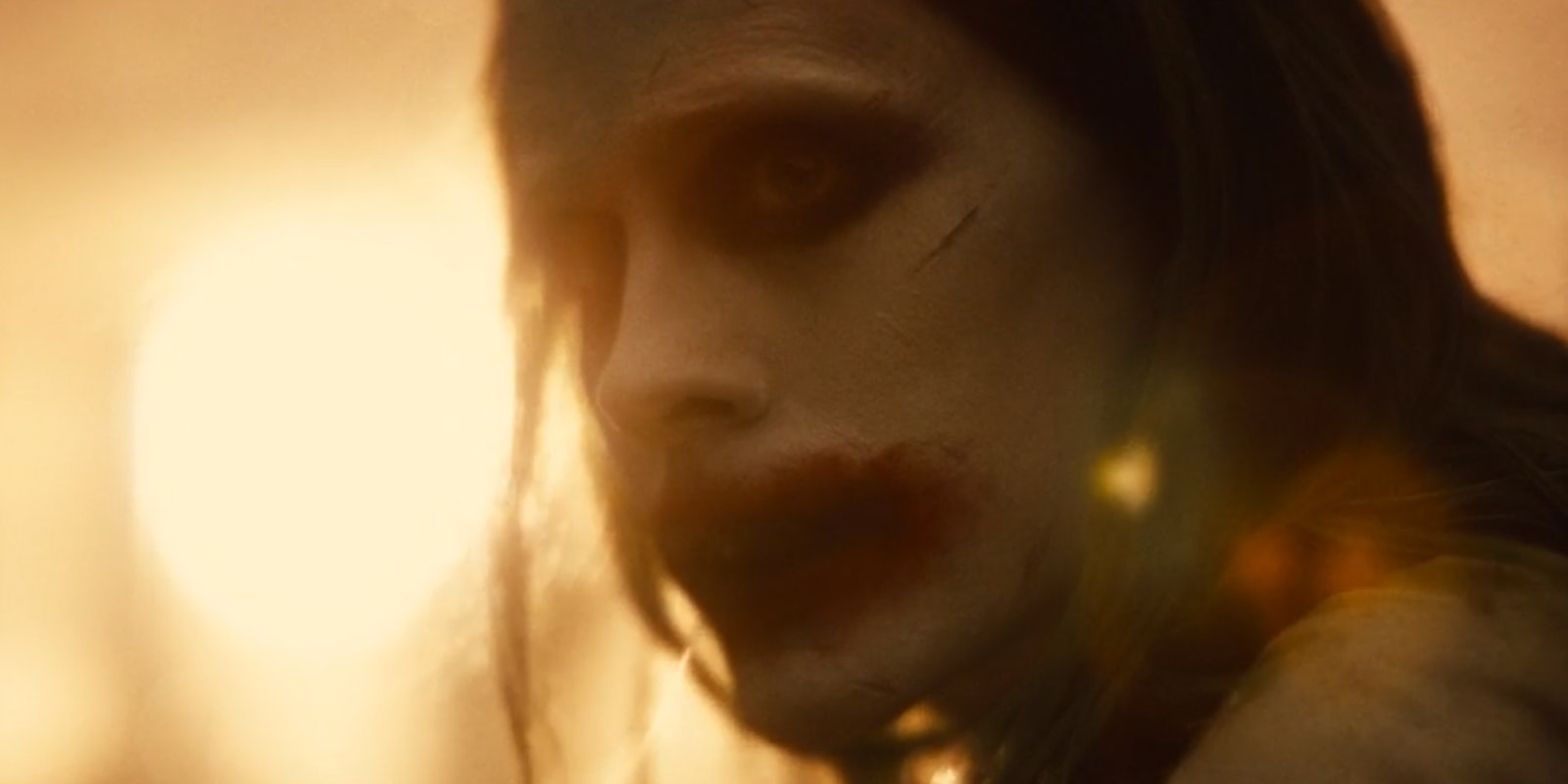With a luxuriant four-hour runtime, Zack Snyder’s Justice League doesn’t actually end when it “ends.” Once the good guys have defeated the bad guys, we’re treated to an epilogue. Featuring Jared Leto’s Joker, that epilogue is the most jarring element of the film.
Spoiler note: This story includes spoilers for the Snyder Cut epilogue.
The first 3.7 hours of the Snyder Cut make for an OK blockbuster that suffers from simply being too long. But the epilogue—well, it’s certainly memorable! Set in a post-apocalyptic wasteland, it features Batman, the Joker (who doesn’t appear elsewhere in the film), and a few Justice League allies. They have a conversation (I’ll go into that in a moment) about their enemy Evil Superman… and then Bruce Wayne wakes up, revealing that this was all actually a dream. Bruce then walks to his front door, where the Martian Manhunter (played by Harry Lennix) has shown up to introduce himself and apply for a place in the Justice League.
This clunky scene is kind of baffling, even if you’re a DC fan who recognizes the Martian Manhunter on sight—which, to be fair, is the target audience for the Snyder Cut. Bruce reacts with total calm to the revelation that Martians exist, that this guy calls himself a Manhunter (red flag!), and that he’s apparently a shapeshifter. Wouldn’t Bruce be more concerned that this random alien knows his secret identity? Why would he accept him into the Justice League at face value?
Of course, maybe Bruce is just putting a brave face on an unexpected and unpredictable situation. At any rate, it’s a poorly conceived teaser scene, hinting at a Justice League sequel that will probably never exist.
While most of the film consists of footage originally directed by Snyder in 2016, these epilogue scenes were shot recently, specifically for the Snyder Cut. The Martian Manhunter bit is a self-explanatory intro for him to join the Justice League, while the Joker material is more abstract, with Leto and Ben Affleck filming their lines separately due to scheduling issues. Their scene continues a dream sequence that began in Batman v Superman, where Bruce envisions an apocalyptic future in which Superman is an evil tyrant and Batman leads a group of rebels against him. In the Snyder Cut sequel, Bruce and his allies prepare for a confrontation with Superman, with the Joker as a member of their team.
The Joker gives a long monologue where he teases Bruce about his dead sidekick Robin (but doesn’t utter the much-memed “we live in a society” line, which appeared in the trailer), and then Evil Superman shows up. It’s a strange vibe overall and fails to utilize the Joker in an interesting way. Is he funny? Is he threatening? Is there a reason for him to be there? Not really! But DC fans love the Joker, and Zack Snyder loves the Joker, and above all, this teases a potential idea for Justice League 2. Known as the “Knightmare” timeline, this post-apocalyptic future would see the Joker team up with the Justice League survivors to defeat Superman (and his then-ally, the supervillain Darkseid) by traveling back in time to fix the past. So yes, kind of similar to Avengers: Endgame‘s “collect the Infinity Stones via time travel to defeat Thanos” idea—although in fairness, plenty of superhero storylines have a lot in common.
With the Snyder Cut arriving on HBO Max today, it’s too early to know how the film’s epilogue is being received, but there will probably be a divide between hardcore SnyderVerse fans and more casual viewers. The Joker scene doesn’t have any narrative or emotional purpose within the film, but to Snyder and his fanbase, that doesn’t really matter. Its real job is to squeeze in a last-ditch reference to a Justice League sequel that didn’t get greenlit by Warner Bros.—and to fire up another fan campaign for that film to get made.


